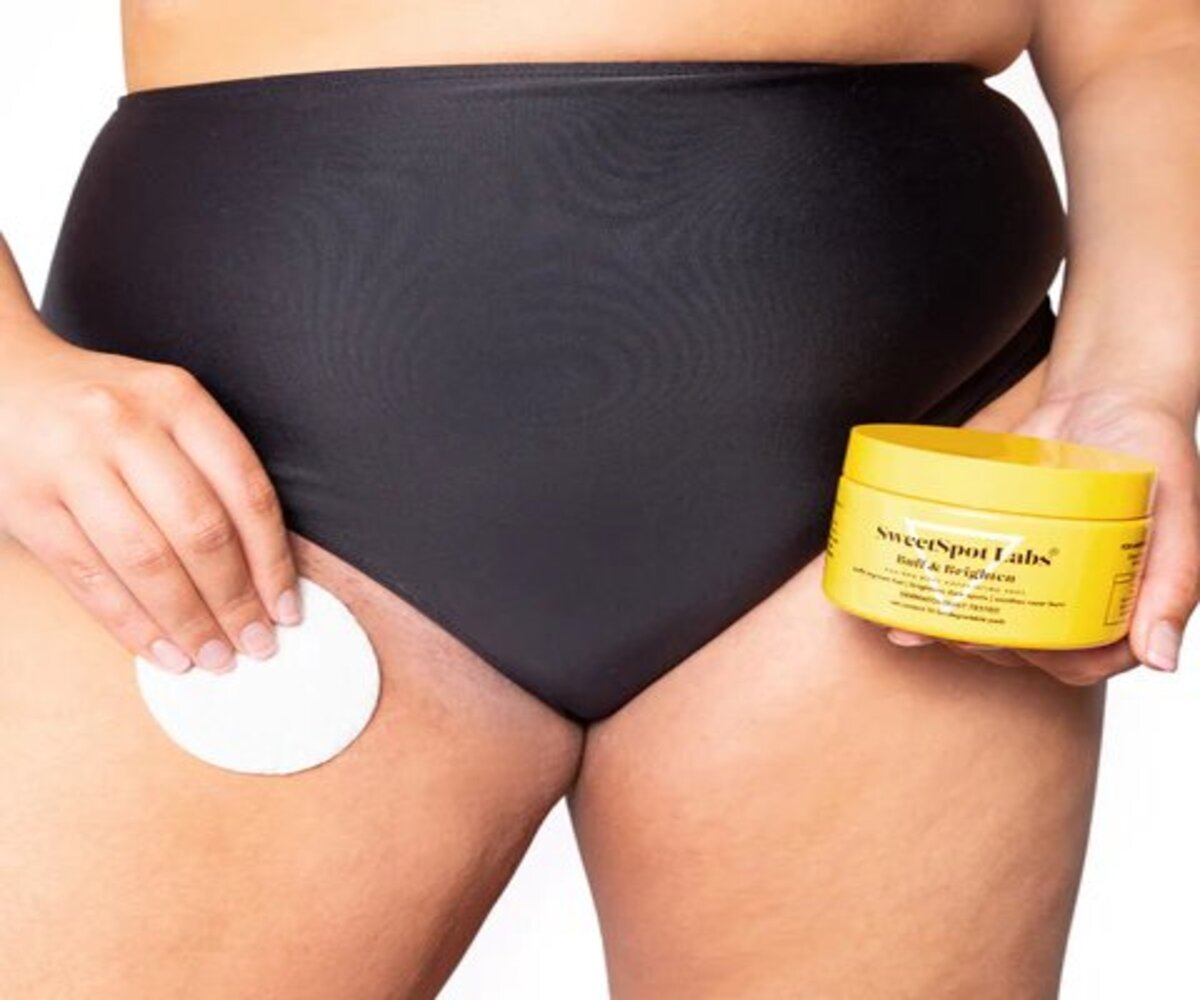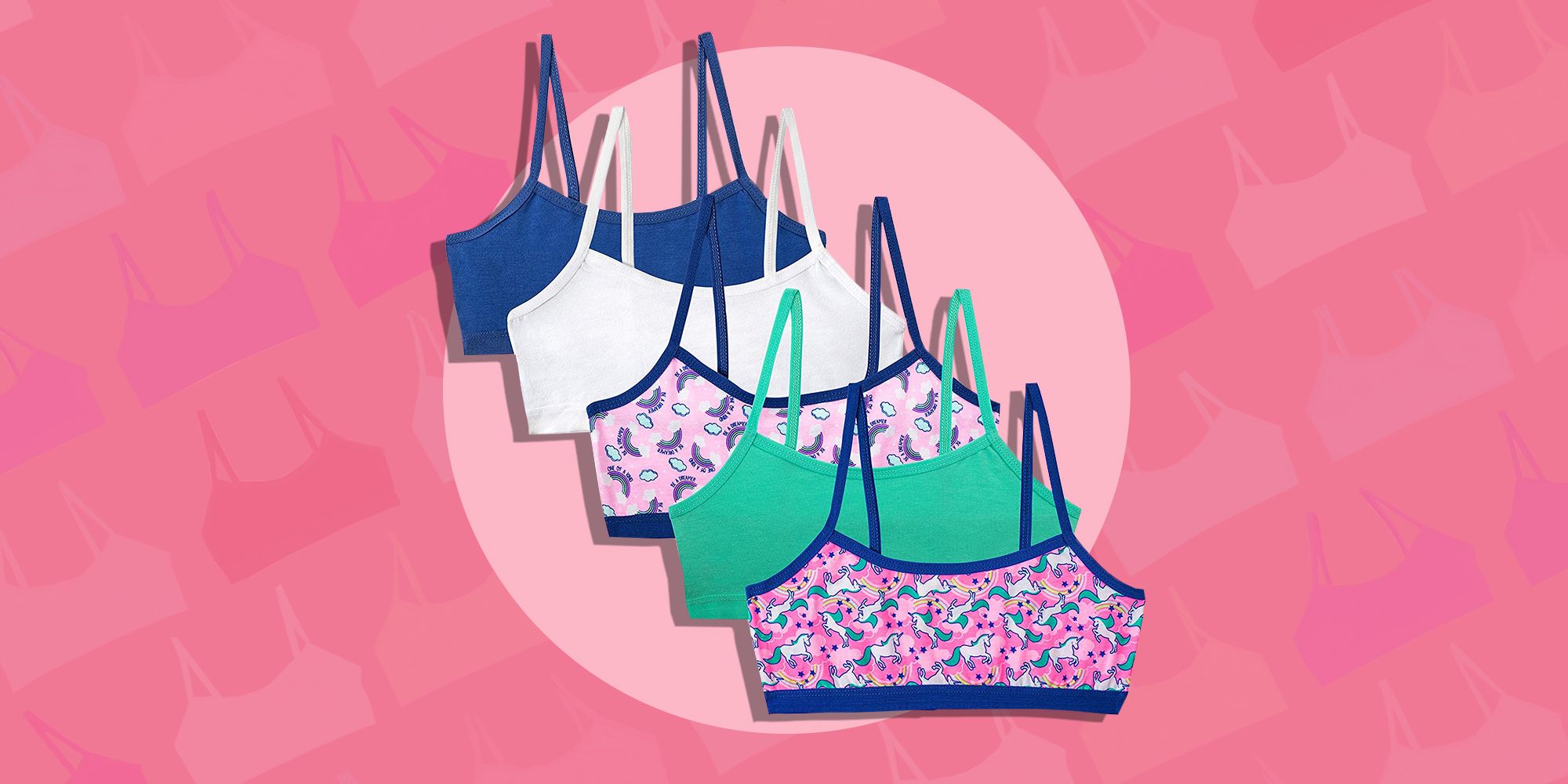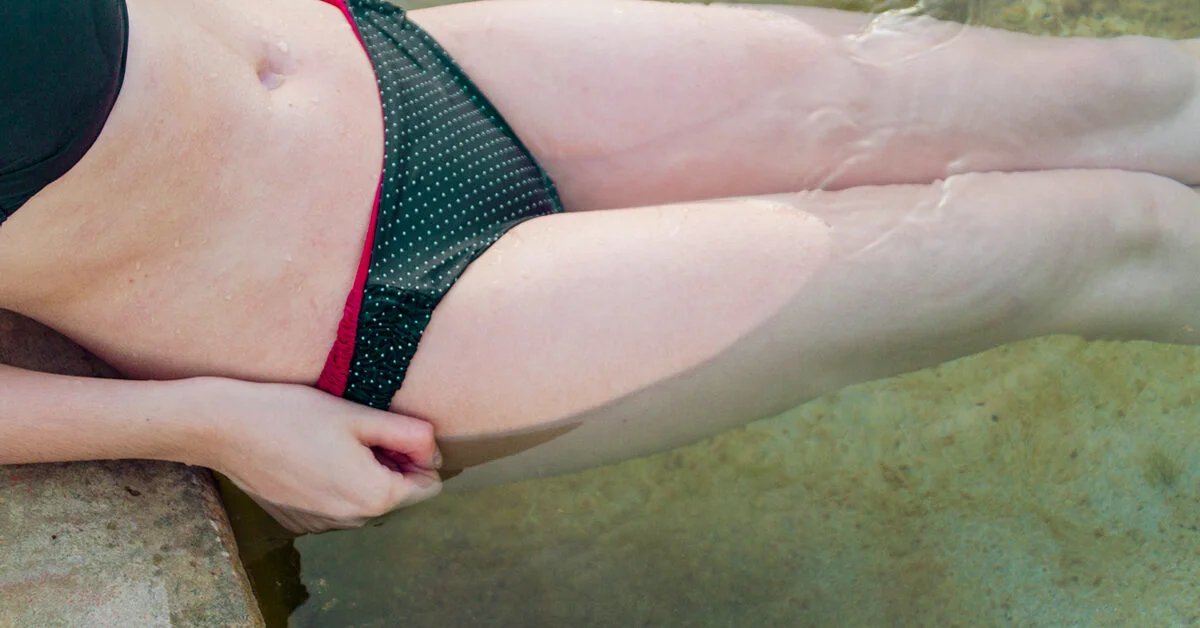Home>How-to Guides>For Women>How To Start A Swimwear Line


For Women
How To Start A Swimwear Line
Modified: August 2, 2023
Learn the essential steps to start your own swimwear line for women. From design to production, we've got you covered! Start your dream business today.
(Many of the links in this article redirect to a specific reviewed product. Your purchase of these products through affiliate links helps to generate commission for Under-tec.com, at no extra cost. Learn more)
Table of Contents
- Introduction
- Market Research
- Design and Concept Development
- Sourcing Materials and Manufacturers
- Branding and Logo Design
- Creating Prototypes
- Pricing and Cost Analysis
- Marketing and Promotion Strategies
- Online Sales Channels
- Wholesale and Retail Distribution
- Financial Planning and Budgeting
- Launching and Scaling the Swimwear Line
- Conclusion
Introduction
Welcome to the exciting world of swimwear! Whether you have a passion for fashion or are seeking to turn your creative ideas into a profitable business venture, starting a swimwear line can be a rewarding and fulfilling endeavor. From designing stunning pieces that showcase the latest trends to creating a brand that resonates with your target audience, the possibilities are endless.
However, diving into the swimwear industry requires careful planning, market research, and strategic decision-making. In this article, we will guide you through the essential steps to help you start your own swimwear line successfully. From concept development to manufacturing, branding, and marketing strategies, we’ve got you covered.
Before diving headfirst into the process, it’s crucial to note that the swimwear market is highly competitive. With countless established brands and emerging designers, standing out from the crowd can be a challenge. Therefore, it’s essential to differentiate your swimwear line by offering unique designs, high-quality materials, and a compelling brand identity that resonates with your target market.
Throughout this guide, we’ll discuss the key components of starting a swimwear line, including market research, design and concept development, sourcing materials and manufacturers, branding and logo design, creating prototypes, pricing and cost analysis, marketing and promotion strategies, online sales channels, wholesale and retail distribution, financial planning and budgeting, and finally launching and scaling your swimwear line.
Are you ready to dive into the world of swimwear entrepreneurship? Let’s get started on your exciting journey!
Market Research
Market research is a crucial step in starting a swimwear line as it provides valuable insights into your target market, competitors, and industry trends. Understanding the needs and preferences of your potential customers will help you create designs that resonate with them and set your brand apart. Here are some key aspects to consider when conducting market research for your swimwear line:
Identify your target market: Determine the demographics of your target audience, such as age, gender, location, and lifestyle. Consider their preferences, purchasing power, and the factors that influence their buying decisions. This information will guide your design choices, pricing strategies, and marketing efforts.
Analyze the competition: Study other established swimwear brands and emerging designers to identify their strengths, weaknesses, and unique selling points. Identify any gaps or opportunities in the market that your swimwear line can fill. This analysis will help you differentiate your brand and design offerings.
Track industry trends: Stay updated on the latest swimwear trends, colors, patterns, and styles. Consider attending trade shows, fashion events, and following influential designers and industry publications. By being aware of the current market demand, you can tailor your designs to be on-trend and appealing to your target audience.
Collect customer feedback: Conduct surveys, interviews, or focus groups with potential customers to gather feedback on their preferences, needs, and concerns regarding swimwear. This firsthand information will help you refine your designs and create products that cater to their specific desires.
Consider sustainability and ethical practices: Consumers are increasingly conscious of ethical and sustainable fashion practices. Research and understand the demand for eco-friendly materials, fair labor practices, and environmentally responsible manufacturing processes. Incorporating these practices into your swimwear line can appeal to a growing segment of customers.
Remember, thorough market research is an ongoing process. Continuously monitor industry trends, consumer preferences, and competitor strategies to adapt your swimwear line and stay ahead in this dynamic market.
Design and Concept Development
The design and concept development stage is where your swimwear line comes to life. It involves translating your creative vision into tangible designs that reflect your brand identity and resonate with your target audience. Here are key steps to consider in this process:
Define your brand identity: Determine the unique identity and values that you want to communicate through your swimwear line. Consider factors such as your brand’s personality, aesthetic, and the emotions you want to evoke in your customers. This will guide your design choices and help create a cohesive brand image.
Research design inspiration: Explore various sources of design inspiration such as fashion magazines, social media platforms, nature, art, and cultural influences. Identify patterns, colors, textures, and silhouettes that align with your brand identity and resonate with your target market.
Sketch and create design concepts: Start sketching your design ideas, focusing on details such as cuts, prints, embellishments, and color schemes. Experiment with different shapes and styles to create a diverse range of swimwear pieces. Consider functionality and comfort along with aesthetics to design swimwear that is both stylish and practical.
Develop technical drawings and specifications: Once you have finalized your design concepts, create detailed technical drawings that include measurements, seams, stitches, and other specifications. These drawings will be crucial when communicating your vision to manufacturers and ensuring accurate production.
Create sample prototypes: Work with a skilled pattern maker or sample maker to translate your design sketches and technical drawings into physical swimwear samples. Test these samples for fit, comfort, and overall aesthetics. Make adjustments as necessary to perfect the designs before moving ahead with production.
Quality testing: Ensure that your swimwear meets the highest quality standards. Test fabrics for durability, colorfastness, and resistance to chlorine and sun exposure. Seek the expertise of industry professionals to ensure that your swimwear is of superior quality and can withstand frequent use.
Consider diverse body shapes and sizes: Inclusivity is an essential aspect of swimwear design. Cater to a range of body shapes and sizes to ensure that your swimwear line is accessible to a diverse customer base. Consider offering different cuts, styles, and coverage options to make everyone feel confident and comfortable in your designs.
Remember, the design and concept development stage requires careful attention to detail and creativity. Iteration and refinement are key to creating a swimwear line that stands out in the market and resonates with your target audience.
Sourcing Materials and Manufacturers
Once you have finalized your swimwear designs, it’s time to source the materials and find the right manufacturing partners to bring your creations to life. Here are the key steps to consider in the sourcing process:
Research and select materials: Identify the materials that align with your brand’s vision and quality standards. Consider factors such as fabric composition, stretchability, breathability, and resistance to chlorine and UV rays. Research and connect with textile suppliers who offer a wide range of swimwear-specific fabrics to choose from.
Request fabric samples: Request samples from potential suppliers to evaluate the quality, color, and texture of the materials. Test the samples for durability, comfort, and suitability for swimwear. It’s crucial to choose fabrics that not only offer functionality but also enhance the overall aesthetics of your swimwear designs.
Finding manufacturers: Research and connect with swimwear manufacturers who specialize in producing high-quality swimwear. Look for manufacturers with experience, a good reputation, and the capacity to meet your production needs. Consider factors such as their location, production capacity, pricing, and any ethical guidelines they follow.
Request for production samples: Once you have shortlisted potential manufacturers, request production samples to assess their craftsmanship, attention to detail, and ability to meet your design specifications. Test these samples for fit, construction, and overall quality. Make sure the manufacturer understands and can execute your design vision accurately.
Audit manufacturers: Conduct thorough due diligence by visiting the manufacturing facilities or using reputable third-party auditing services. Ensure that the manufacturers adhere to ethical labor practices, have proper certifications, and maintain high standards of quality control.
Finalize contracts and agreements: Upon selecting the right manufacturer, negotiate terms, pricing, production timelines, and the specifics of the manufacturing process. Clearly outline your expectations, quality standards, and any deadlines. It’s crucial to have a solid contractual agreement in place to protect your interests and ensure a smooth production process.
Build a long-term relationship: Foster a strong partnership with your chosen manufacturer by maintaining clear communication, providing regular feedback, and resolving any issues promptly. Building a long-term relationship with your manufacturer can lead to improved efficiency, better quality control, and smoother production processes in the long run.
Remember, the sourcing process is crucial to ensure that your swimwear line meets your quality standards and is produced in an ethical and sustainable manner. Take the time to research and choose the right materials and manufacturers who align with your brand values and vision.
Branding and Logo Design
A strong brand identity is essential to differentiate your swimwear line in a competitive market. It’s what sets you apart from other brands and communicates your unique value proposition to your target audience. Here are key steps to consider when developing your brand identity and designing a memorable logo:
Define your brand values: Determine the core values and principles that your swimwear line represents. Consider factors such as sustainability, inclusivity, empowerment, or a specific lifestyle. These values will form the foundation of your brand identity and guide your messaging and design choices.
Identify your target audience: Understand the demographics, preferences, and aspirations of your target customers. This will help you create a brand image and a logo that resonates with them. Consider their style preferences, lifestyle choices, and the emotions they associate with swimwear.
Research competitors: Analyze the branding strategies of other swimwear brands in the market. Identify their brand positioning, visual elements, and messaging. This research will help you identify gaps and opportunities to differentiate your brand and create a unique identity.
Create a compelling brand story: Craft a narrative that encapsulates the essence of your brand. Your story should articulate your brand values, vision, and the journey that led you to create your swimwear line. A compelling brand story can emotionally connect with your customers and create loyalty.
Design a memorable logo: Your logo is the visual representation of your brand. It should be unique, simple, and easily recognizable. Consider the colors, fonts, and symbols that reflect your brand identity. Hire a professional designer if needed to create a logo that captures the essence of your swimwear line.
Consistency across branding materials: Ensure consistency in color schemes, fonts, and design elements across all your branding materials. This includes your website, packaging, social media profiles, and marketing collateral. Consistency helps build brand recognition and strengthens your brand’s identity.
Communicate through visuals and messaging: Develop a visual language that aligns with your brand identity. Use high-quality imagery and thoughtful captions that convey your brand values and create a cohesive brand experience. Use your social media platforms, website, and other marketing channels to tell your brand story and connect with your audience.
Brand voice and tone: Define the tone and style of your brand communications. Consider whether your brand voice should be playful, authoritative, empowering, or informative, depending on your target audience and brand positioning. Consistency in the brand voice helps build brand recognition and fosters trust.
Remember, branding goes beyond just a logo – it’s about creating a holistic brand experience that resonates with your customers. Invest time and effort in developing a strong brand identity and designing a memorable logo that reflects the essence of your swimwear line.
Creating Prototypes
Creating prototypes is an essential step in the development of your swimwear line. Prototypes allow you to test your designs, evaluate their fit and functionality, and make necessary adjustments before moving forward with production. Here are the key steps involved in creating prototypes:
Collaborate with a skilled pattern maker: Work closely with a skilled and experienced pattern maker who specializes in swimwear. Share your design concepts, technical drawings, and any specific requirements. The pattern maker will create precise patterns that will serve as the blueprint for your prototypes.
Select materials for prototypes: Choose materials that closely resemble the fabrics you intend to use for production. This will give you a more accurate idea of how the final product will look and feel. Work with your suppliers to obtain sample materials that match your specifications.
Produce sample prototypes: Work with a sample maker or seamstress to bring your designs to life. Using the patterns created by the pattern maker, the sample maker will cut and sew the materials to create the sample swimwear pieces. Pay close attention to the construction, fit, and overall aesthetics of the prototypes.
Evaluate fit and comfort: Try on the prototypes or have models of various sizes and body types try them on. Assess the fit, functionality, and comfort of the swimwear. Take note of any areas that require adjustment, such as size grading, seam placements, or support features.
Make necessary adjustments: Based on the feedback from fit sessions, work with the pattern maker and sample maker to make the necessary adjustments to the patterns and prototypes. This iterative process may involve multiple rounds of sampling to ensure the perfect fit and desired aesthetics.
Test for durability and performance: Conduct durability tests on your prototypes to determine how well the materials hold up in the water, sun exposure, and chlorine. Verify that the swimwear maintains its shape, color, and elasticity after repeated wear and washing.
Solicit feedback: Gather feedback from trusted individuals, such as friends, family, or industry professionals, who can provide an objective perspective on the design, fit, and overall appeal of the prototypes. Consider their suggestions and make any necessary refinements to your designs.
Finalize the prototypes: Once you are satisfied with the fit, functionality, and overall aesthetics of the prototypes, you are ready to move forward with production. Ensure that the finalized prototypes serve as the benchmark for your manufacturers to replicate when producing your swimwear line.
Remember, the creation of prototypes allows you to fine-tune your swimwear designs and ensures that the final products are of the highest quality and meet your customers’ expectations. Invest time and effort in this stage to create swimwear pieces that are both fashionable and functional.
Pricing and Cost Analysis
Pricing your swimwear line appropriately is crucial for both profitability and competitiveness. Effective pricing involves considering various factors, such as production costs, market demand, and perceived value. Performing a comprehensive cost analysis will help you determine your pricing strategy. Here are the key steps to consider:
Calculate production costs: Determine the cost of materials, labor, packaging, shipping, and any other expenses associated with producing your swimwear. Consider both direct costs, such as fabric and trims, and indirect costs, such as overhead expenses. Consult with manufacturers and suppliers to obtain accurate cost estimates.
Assess the market and competition: Research the pricing strategies of similar swimwear brands in your target market. Analyze their price points and the value they offer to customers. Consider the perceived value of your swimwear line, including the quality, design uniqueness, and brand appeal, in relation to competitors in determining your price range.
Consider profit margin: Determine the profit margin you aim to achieve for your swimwear line. Consider factors such as the size of your business, volume of sales, and long-term goals. It’s important to strike a balance between a competitive price and a profit margin that sustains and grows your business.
Factor in overhead and operational expenses: Consider your fixed costs, such as rent, utilities, marketing, and other operational expenses, when determining your pricing strategy. These costs should be distributed across the units sold to ensure profitability.
Discounts and promotions: Decide whether you plan to offer discounts or run promotional campaigns to incentivize customers and drive sales. Consider the impact of discounts on your profit margin and the perception of your brand.
Evaluate pricing elasticity: Assess the price sensitivity of your target market. Consider different pricing tiers and options to cater to a broader range of customers. You may offer premium, mid-range, and budget-friendly options to capture different segments of the market and maximize sales potential.
Regularly review and adjust prices: Keep a pulse on market trends, customer feedback, and changes in production costs. Regularly review your pricing strategy and make adjustments if needed to stay competitive and maintain profitability.
Bundling and add-on options: Consider offering complementary products or value-added services to increase the perceived value of your swimwear line. This can include packaging, accessories, or customization options that customers can add to their purchase for an additional fee.
Test your pricing strategy: Before launching your swimwear line, conduct market research or soft launch to gauge customer response to your price points. Seek feedback and track sales to ensure that your pricing aligns with customer expectations and market demand.
Remember, pricing plays a crucial role in the success of your swimwear line. Conducting a thorough cost analysis, understanding your market, and considering factors such as profit margins and perceived value are essential in arriving at a competitive and sustainable pricing strategy.
Marketing and Promotion Strategies
Effective marketing and promotion strategies are essential for building brand awareness, reaching your target audience, and driving sales for your swimwear line. Here are key steps to consider when developing your marketing and promotion strategies:
Identify your target audience: Understand the demographics, interests, and behaviors of your target customers. This information will help you tailor your marketing messages and choose the right platforms to reach them.
Create a compelling brand story: Craft a narrative that encapsulates the essence of your brand and resonates with your target audience. Communicate your brand values, vision, and the unique experience your swimwear line offers. Use storytelling techniques to evoke emotions and engage your audience.
Build an engaging online presence: Create a visually appealing website and maintain active social media profiles. Showcase your swimwear designs, share behind-the-scenes content, and engage with your audience through relevant and compelling posts.
Utilize influencer marketing: Collaborate with influencers, bloggers, or micro-influencers with an engaged following in the fashion and swimwear niche. Their endorsements can help expand your brand reach and tap into their loyal fan base.
Engage in content marketing: Create valuable and educational content related to swimwear fashion, styling tips, beach essentials, and body positivity. Publish blog posts, videos, or podcasts on your website or through guest contributions on other platforms to establish yourself as an industry expert and drive traffic to your brand.
Host giveaways and contests: Run promotional giveaways and contests on social media, offering free swimwear or exclusive discounts as prizes. This can help expand your brand reach, generate engagement, and attract new customers.
Collaborate with complementary brands: Partner with other brands that align with your values and target market. Collaborate on joint promotions, cross-marketing initiatives, or create limited-edition collaborative collections. This can help broaden your exposure and reach new audiences.
Attend trade shows and events: Participate in relevant fashion trade shows, pop-up events, or swimwear exhibitions to showcase your swimwear line. These events provide opportunities to connect with buyers, industry professionals, and potential customers.
Implement search engine optimization (SEO): Optimize your website and content with relevant keywords to improve your online visibility and rankings in search engine results. Research keywords related to swimwear fashion and incorporate them naturally into your website copy, blog posts, and product descriptions.
Utilize email marketing: Build an email list of interested customers and use email marketing campaigns to promote new collections, exclusive offers, and updates on your brand. Personalize your messages and segment your audience based on their preferences to drive engagement and conversions.
Track and analyze data: Use analytics tools to monitor your marketing efforts, track website traffic, engagement rates, and sales conversions. Analyzing this data will help you identify the most effective marketing channels and refine your strategies accordingly.
Remember, marketing and promotion are ongoing efforts that require consistent monitoring and adaptation. Experiment with different strategies, measure their impact, and make adjustments based on customer feedback and market trends to ensure the success and growth of your swimwear line.
Online Sales Channels
In today’s digital age, online sales channels play a crucial role in reaching a wider audience and driving sales for your swimwear line. Here are key online sales channels to consider for your business:
E-commerce website: Create a user-friendly and visually appealing e-commerce website where customers can browse and purchase your swimwear line. Optimize your website for a smooth navigation experience, secure payment processing, and detailed product information. Include high-quality product images and size charts to help customers make informed purchasing decisions.
Marketplace platforms: Leverage popular online marketplaces such as Amazon, Etsy, eBay, or ASOS Marketplace to expand your reach and tap into their existing customer base. These platforms provide built-in traffic and marketing tools, but it’s important to carefully consider the fees and competition associated with each marketplace.
Social media sales: Utilize social media platforms like Instagram and Facebook to showcase your swimwear line and drive sales directly through your posts and stories. Utilize shoppable posts and tags to make it easy for customers to purchase your products without leaving the platform.
Influencer collaborations: Partner with influencers or content creators in the fashion and swimwear niche who have a significant social media following. Collaborate on sponsored posts, giveaways, or affiliate marketing programs to reach their audience and drive traffic to your online sales channels.
Email marketing campaigns: Build an email list of interested customers and regularly send out targeted email campaigns to promote new collections, special offers, and exclusive discounts. Use personalized messaging and segment your audience to increase engagement and conversion rates.
Affiliate marketing: Set up an affiliate marketing program where affiliates earn a commission by promoting and driving sales to your online store. This can help expand your brand reach and tap into the networks of influencers, bloggers, and other content creators.
Collaborative partnerships: Collaborate with other online brands or websites that share a similar target audience. Explore options for cross-promotion, guest blogging, or joint giveaways to increase brand exposure and drive traffic to your online sales channels.
Search engine optimization (SEO): Optimize your website and product listings for search engines by incorporating relevant keywords into your content. This can improve your organic rankings and drive targeted traffic to your online sales channels.
Customer reviews and testimonials: Encourage satisfied customers to leave reviews or testimonials on your website and other online platforms. Positive reviews can build trust with potential customers and increase the likelihood of making a purchase.
Mobile commerce (m-commerce): Ensure that your online sales channels are mobile-friendly and responsive, as an increasing number of customers prefer to shop on their mobile devices. Optimize the layout, checkout process, and overall user experience for seamless mobile shopping.
Remember, online sales channels provide you with the opportunity to reach a global audience and maximize the sales potential of your swimwear line. Choose the channels that align with your target audience, monitor their performance, and adapt your strategies as needed to drive growth and success.
Wholesale and Retail Distribution
Wholesale and retail distribution channels play a crucial role in expanding the reach and sales of your swimwear line. They allow you to tap into established networks of retailers and reach a wider customer base. Here are key steps and considerations for wholesale and retail distribution:
Identify potential retailers: Research and target retailers that align with your brand and target market. Consider their location, customer base, and the range of swimwear brands they carry. Look for retailers that have a strong online presence as well as brick-and-mortar stores.
Create a wholesale program: Develop a wholesale program that outlines your terms and conditions for retailers. Determine minimum order quantities, pricing, payment terms, and any exclusivity agreements. Provide retailers with comprehensive product information, high-quality images, and marketing materials to support their sales efforts.
Attend trade shows: Participate in relevant fashion trade shows and swimwear exhibitions to connect with potential retailers. Showcase your swimwear line, build relationships with buyers, and secure orders. Trade shows provide an excellent opportunity to showcase your brand and generate buzz within the industry.
Approach retailers: Reach out to targeted retailers through email, phone calls, or in-person visits. Introduce your swimwear line, provide information about your brand, and offer to send samples or lookbooks. Highlight the unique selling points of your swimwear line and explain how it complements their existing product offerings.
Consignment agreements: Consider offering consignment agreements to retailers, especially when starting out. This allows retailers to stock your swimwear line without the risk of upfront purchases. As your brand gains traction, you can transition to more traditional wholesale arrangements.
Direct-to-consumer retail: In addition to wholesale partnerships, consider establishing your own retail presence through a brick-and-mortar store or an e-commerce platform. Direct-to-consumer retail allows you to have more control over the customer experience and build a loyal customer base.
Dropshipping: Explore the option of dropshipping, where a third-party handles order fulfillment and shipping directly to the customer. This can be a cost-effective solution to expand your distribution channels and reach customers without the need for maintaining inventory.
Inventory management: Develop effective inventory management practices to ensure that you have enough stock to meet demand while avoiding excess inventory. Consider investing in inventory management software to streamline your processes and track stock levels accurately.
Provide excellent customer support: Establish strong relationships with your retail partners by providing excellent customer support. Respond to inquiries promptly, offer training or product knowledge resources, and be proactive in addressing any concerns or issues that may arise.
Consistency in branding: Ensure that your branding is consistent across all retail channels. Maintain control over how your swimwear line is presented and ensure that it aligns with your brand identity and values. Provide clear guidelines to retailers regarding the use of logos, imagery, and product descriptions.
Monitor and evaluate performance: Continuously monitor the performance of your wholesale and retail partnerships. Track sales, assess customer feedback, and analyze the effectiveness of your distribution channels. Regularly communicate with retailers to evaluate their needs and explore opportunities for growth and improvement.
Remember, wholesale and retail distribution channels can significantly expand the reach and sales of your swimwear line. Building strong relationships with retailers, maintaining consistent branding, and providing excellent customer support are key to building a successful distribution network and growing your business.
Financial Planning and Budgeting
Financial planning and budgeting are essential for the success and sustainability of your swimwear line. Proper financial management helps you make informed decisions, allocate resources effectively, and maintain profitability. Here are key steps to consider when it comes to financial planning and budgeting:
Estimate startup costs: Determine the upfront costs associated with starting your swimwear line. This includes expenses such as designing, manufacturing, marketing, branding, website development, and obtaining necessary licenses or permits. Consider both one-time and recurring costs to establish a realistic budget.
Create a business plan: Develop a comprehensive business plan that outlines your goals, target market, marketing strategy, financial projections, and pricing strategy. A well-crafted business plan serves as a roadmap and helps you stay on track financially.
Set sales and revenue goals: Determine your sales targets and revenue goals for the short and long term. Consider factors such as market size, competition, and growth projections. Set achievable goals that align with your market research and financial projections.
Track and manage expenses: Keep detailed records of your business expenses, including manufacturing costs, marketing expenses, overhead costs, and any other financial outflows. Use accounting software or spreadsheet tools to monitor your expenses and ensure that they are within budget.
Estimate pricing and profit margins: Calculate the costs associated with manufacturing and selling your swimwear line to determine the appropriate pricing that covers your expenses and allows for a reasonable profit margin. Consider factors such as materials, labor, packaging, shipping, and overhead costs.
Monitor cash flow: Cash flow management is crucial to ensure that you have sufficient funds to cover expenses, manufacturing costs, and other financial obligations. Continuously monitor your cash flow by tracking payments and managing inventory levels. Consider implementing a cash flow forecast to anticipate any potential cash shortages or surpluses.
Secure financing if needed: Assess your funding needs and explore financing options such as business loans, crowdfunding, or seeking investors. Create a detailed financial plan to present to potential lenders or investors to demonstrate the viability and profitability of your swimwear line.
Prepare for seasonal fluctuations: Take into account the seasonality of the swimwear industry and plan your budget accordingly. Consider the peak and off-peak periods and adjust your production and marketing efforts to align with customer demand throughout the year.
Monitor and analyze financial performance: Regularly review your financial statements, such as the income statement, balance sheet, and cash flow statement. Analyze key financial ratios and metrics to assess the profitability, liquidity, and overall financial health of your swimwear line. Make adjustments to your budget and financial plans based on these insights.
Consult with financial professionals: Consider seeking the advice of accountants or financial consultants who specialize in the fashion industry. They can provide valuable insights, help with budgeting and forecasting, and assist with tax planning and compliance.
Remember, proper financial planning and budgeting are essential to ensure the financial stability and growth of your swimwear line. By closely monitoring and managing your finances, you can make informed decisions and position your business for long-term success.
Launching and Scaling the Swimwear Line
Launching and scaling your swimwear line is an exciting phase that requires careful planning, strategic execution, and a focus on growth. Here are key steps to consider when it comes to launching and scaling your swimwear line:
Create a launch plan: Develop a comprehensive launch plan that outlines the key activities and milestones leading up to the launch of your swimwear line. Set a launch date, create a marketing calendar, and identify the promotional channels and strategies you will utilize to generate buzz and drive sales.
Build brand awareness: Prior to the launch, build brand awareness by leveraging social media, content marketing, and collaborations with influencers and complementary brands. Generate anticipation and excitement around your swimwear line through sneak peeks, behind-the-scenes content, and engaging storytelling.
Execute a successful launch: On the day of the launch, ensure that your website is ready to handle traffic and purchases smoothly. Implement marketing campaigns to drive traffic to your online store and utilize email marketing to notify your subscribers about the launch. Monitor the launch closely, handle customer inquiries promptly, and leverage social media to amplify the launch campaign.
Continuously innovate and refine: Receive customer feedback and use it to constantly iterate and improve your swimwear line. Pay attention to product reviews, social media engagement, and customer inquiries to identify areas for improvement. Stay updated on industry trends and anticipate the evolving needs and preferences of your target audience.
Expand product offerings: As your swimwear line gains traction, consider expanding your product offerings to cater to a wider range of customer preferences. Introduce new styles, colors, or prints to keep your collection fresh and exciting. Consider offering complementary products such as cover-ups, beach accessories, or resortwear to maximize customer value and increase average order size.
Explore international markets: Once you have established a strong presence in your domestic market, consider expanding to international markets. Conduct thorough market research, understand cultural nuances, and adapt your marketing strategies to resonate with customers in different regions. Seek partnerships with local retailers or e-commerce platforms to facilitate entry into new markets.
Establish strategic partnerships: Collaborate with retailers, influencers, or brands that align with your target market and brand values. Form partnerships that can help you increase brand exposure, reach new customer segments, and drive traffic to your online store. Consider co-marketing campaigns, guest blogging opportunities, or joint promotions to leverage each other’s audiences.
Invest in marketing and advertising: Allocate a portion of your budget towards marketing and advertising efforts to increase brand visibility and attract new customers. Consider paid advertising on social media platforms, search engine marketing, or influencer partnerships to reach a wider audience. Monitor the performance of your marketing campaigns and refine your strategies based on data and customer insights.
Streamline operations and scale production: As demand grows, ensure that your production processes can scale effectively. Work closely with manufacturers to optimize production efficiency, ensure consistent quality, and maintain timely delivery. Continuously evaluate your operations, implement automation where possible, and invest in inventory management systems to streamline your supply chain.
Measure and analyze performance: Regularly assess key performance indicators (KPIs) such as sales revenue, customer acquisition costs, conversion rates, and customer satisfaction. Use these metrics to evaluate the success of your launch and scaling efforts. Identify areas for improvement, analyze trends, and make data-driven decisions to drive further growth and profitability.
Remember, the launch and scaling phase requires a strategic and adaptable approach. Stay focused on your target market, listen to customer feedback, and continuously innovate to keep your swimwear line fresh and relevant. By carefully planning and executing your growth strategies, you can build a successful and thriving swimwear brand.
Conclusion
Starting a swimwear line is a thrilling journey that requires dedication, creativity, and strategic planning. By following the steps outlined in this guide, you can set yourself up for success in the highly competitive swimwear industry. From conducting thorough market research to designing unique and appealing swimwear pieces, sourcing high-quality materials, and implementing effective marketing and distribution strategies, each step plays a crucial role in the success of your brand.
Remember, differentiation is key in the swimwear market. Identify your target audience, understand their needs, and create designs that resonate with them. Develop a strong brand identity, craft a compelling brand story, and invest in professional logo design to establish a unique and recognizable presence in the market.
As you bring your swimwear line to life, pay close attention to quality, fit, and comfort. Prototype and test your designs, gather feedback from customers, and continuously improve your products to ensure customer satisfaction and loyalty.
Marketing and promotion are essential to build brand awareness and drive sales. Utilize online sales channels, collaborate with influencers, and engage in content marketing to reach your target audience effectively. Monitor and analyze your marketing efforts to refine your strategies and optimize your returns.
Scaling your swimwear line requires careful financial planning, attention to market trends, and the ability to adapt to changing dynamics. Continuously evaluate performance, innovate new designs, expand distribution channels, and build strategic partnerships to grow your brand both domestically and internationally.
Finally, always stay attuned to your customers’ needs and preferences. Listen to their feedback, engage with them on social media, and deliver exceptional customer service. By staying true to your brand values and consistently delivering high-quality products and experiences, you can cultivate a loyal customer base that will fuel the growth and success of your swimwear line.









